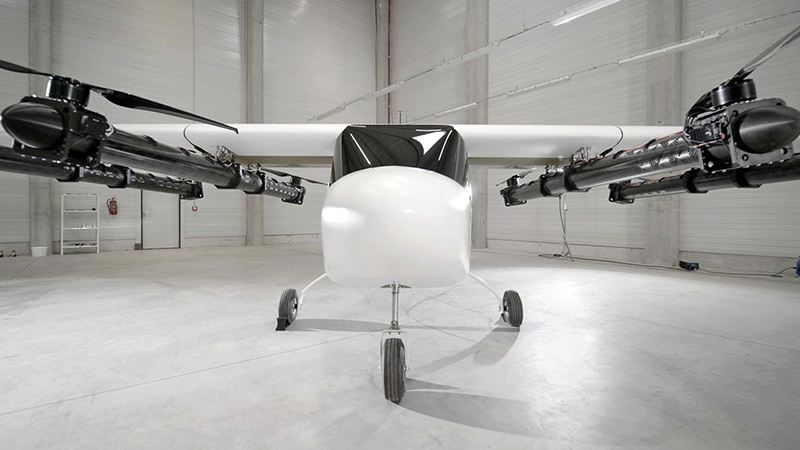

Image Courtesy: ZURI
Despite much industry focus on zero-emission electric VTOLs, we are arguably a while away from large-scale dominance and accessibility. Current battery technology is limited by power output, charge time, and battery pack weight. Once we solve these problems, electric VTOLs will have the market share they crave.
In the meantime, some VTOL startups are investigating ways to use the current technology to its peak efficiency, albeit at the expense of a completely clean power train. One option is hybrid VTOLs.
Much like a hybrid car, a hybrid VTOL uses a combination of fossil fuels and battery technology as its power source. Granted, this may not be the full step forward we would like, but, like hybrid cars, it is a viable middle ground that makes use of readily-available technology.
Without labouring the comparison too hard, let us consider the history of the Toyota Prius, the first mass-produced hybrid car. It launched in 1997 in Japan and quickly became a common sight on roads worldwide, peaking in sales in 2010. Fast forward two decades and electric cars are more commonplace thanks to advances in technology, and hybrid vehicle sales have declined.
The same logic is true of hybrid VTOLs. They are far more environmentally friendly than fuel aircraft but acknowledge their position as a stopgap between present and future technology.
A Czech-based VTOL startup, Zuri, recently tested its first large-scale concept of a hybrid-electric VTOL. It joins the ranks of other companies testing this technology, including Rolls-Royce, Samad Aerospace, and others. Zuri’s VTOL has been in development since 2017, during which time it has been through several scale tests. The most recent, in September, was a 90 per cent scale model with a wingspan of 11 metres.
The VTOL has eight vertical propellers powered by electric motors, and a single horizontal propeller powered by a high-efficiency hybrid power unit. Onboard is a large battery pack for the propulsion systems and in-flight AI. Zuri claims its VTOL will have a maximum range of 700 kilometres before it needs to recharge/refuel. Zuri’s founder, Michal Illich, wants to specifically focus on inter-city and mid-range travel rather than short-range city journeys.
As such, Zuri focuses on peak air efficiency in its design. It is a fixed-wing VTOL, meaning it can rely on a single horizontal propeller due to the wings’ upward lift. The vertical propellers have been positioned to reduce drag as much as possible during horizontal flight, making it a highly efficient aircraft.
Zuri’s VTOL will fulfil the role of an aeroplane for mid-range regional journeys but will be more accessible because it does not need the same infrastructure. The benefit of vertical take-off and landing is that it gives much greater flexibility for passengers, although the 11-metre wingspan does restrict this slightly.
However, a hybrid VTOL of this kind has a much greater range than a fully electric VTOL (at least with current technology). While it is not as environmentally friendly, it is certainly a step in the right direction.
As we discussed in our sustainable aviation post, the aerospace industry must focus on zero-emission technology for the future but also on lower-emission technology for the present. Hybrid VTOLs may fill this gap and provide use-case testing for public perception of regional air mobility vehicles. In short, hybrid VTOLs, if treated properly, could be the Toyota Prius of the aerospace industry.
